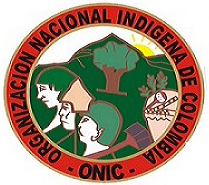mining
Mongolia: ecologist gets 21 years for 'terrorism'
Mongolian ecology activist Tsetsegee Munkhbayar, who was awarded the Goldman Environmental Prize in 2007 for his campaign to protect water sources from mining pollution, was sentenced on Jan. 21 together with four associates to 21 years in prison each for "acts of terrorism." Munkhbayar was arrested on Sept. 16 at a protest in front of the parliament building in Ulan Bator during which a firearm was discharged. Security officials also allegedly found an explosive device in a nearby building. While stating that it does not condone violence, the Goldman Prize asserts that "it is widely understood that the shot was not fired on purpose and nobody was injured." The protest was called by Munkhbayar's "Fire Nation" movement to oppose a new government contract with French company Areva to revive uranium exploration in the Gobi Desert, which traditional heders say has led to death and deformities among livestock. Mongolia's parliament is considering a bill to loosen restrictions on a hard-won environmental law that prohibit mining in the headwaters of rivers and other sensitive areas.
Mexico: police break up blockade of Goldcorp mine
On Jan. 24 the government of the north-central Mexican state of Zacatecas sent about 200 riot and ministerial police to remove some 30 campesinos and their relatives from an entrance they were blocking to the Peñasquito open-pit gold mine in Mazapil municipality. Campesinos from the Las Mesas ejido (communal farm) and the Cedros annex began blocking the entrance on Jan. 16 to get attention from state and federal authorities for their demand to reopen negotiations with the mine's owner, the Vancouver-based Goldcorp Inc., about the rent the company is paying to use ejido land. In addition to removing the protesters, the police arrested two campesino leaders, the brothers Epifanio and Mónico Morquecho, and took them to the prison in Concepción del Oro municipality, 40 km away; they were charged with damages, looting and extortion, based on a criminal complaint from Goldcorp.
Peru: mineral company evicts campesino family
Peru's Yanacocha mining company is implicated in another forced eviction of a campesino family in the northern Cajamarca region. Campesino Segundo Lindorfo Bolaños Atalaya said that on Jan. 19, a mixed force of National Police and Yanacocha security personnel ejected him from his plot within a predio (collective land holding) at Tragadero Grande, Sorochuco district, Celendín province. Bolaños insisted that, contrary to company claims, his plot of six hectares had never been sold to Yanacocha. The plot lies near Laguna Azul, which Yanacocha hopes to convert into a waste pit for the pending Conga project, a new expansion of its massive gold operations in the area. Bolaños charged that Yanacocha's exploration activities on the Conga site had contaminated his plot, which he has long worked with his family. (Celendín Libre, Jan. 23)
South Africa: two dead in water riots
Two were killed Jan. 13 as South African police fired on protesters at the townships of Mothotlung and Damonsville, where residents are angry at having been without water services for a week. The townships are on the outskirts of the northern city of Brits, near the nation's platinum belt, the scene of recrnt labor unrest. Access to water is a constitutional right in South Africa, but many northern townships have been intermittently without water over the past two years due to infrastructure decline linked to corruption and mismanagement. (PoliticsWeb, South Africa, Jan. 21; AFP, Jan. 14; Sky News, Jan. 13)
Peru: new confrontation at Conga mine site
In a new mobilization on the contested Conga mine site in Peru's northern region of Cajamarca, hundreds of local campesinos on Jan. 16 again marched to the shores of the alpine lakes that would be destroyed by the project. National daily La Republica, citing unnamed sources, said the marchers pushed past security guards, and caused "disturbances" and "material damage" to equipment of the Yanacocha mining company. One protester was reported arrested by National Police troops. However, Cajamarca-baed popular organization Tierra y Libertad in a statement on Facebook said only that some 2,000 ronderos (members of the peasant self-defense patrols) from the local provinces of Bambamarca and Celendín marched on the site, taking a six-hour roundabout way through mountain paths to avoid the roadblocks "illegally maintained" by National Police and Yanacocha security.
Mexico: Colima campesinos declare mine-free zone
Vancouver-based IMPACT Silver Corp boasted in a press release this month of promising "second phase drill results" from the San Juan Project, located 150 meters north of its producing Noche Buena Mine and four kilometers southwest of its 500-tonne-per-day Guadalupe Production Center. These are all old mines that the company is now reviving in what it calls the "Royal Mines of Zacualpan Silver-Gold District" of central Mexico. (MarketWired, Jan. 7) But in a community assembly in November, campesinos from the local Nahua indigenous community of Zacualpan (Comala municipality, Colima state) voted to decalre their territory a mine-free zone. On Dec. 4, a delegation from the Indigenous Council for the Defense of the Territory of Zacualpan and Bios Iguana presented the decision to the Federal Agrarian Tribunal in Colima's state capital. Citing a threat to local water sources and the community's "right to consultation," the Indigenous Council pledged to resist any expansion of mining operations at the sites.
Colombia: ecologists cut off talks on alpine mining
The Páramo de Santurbán Water Defense Committee, made up of local residents in high Andean communities straddling the Colombian departments of Santander and Norte de Santander, announced Jan. 11 that they are walking out of talks with the national Ministry of Environment and Sustainable Development aimed at securing consent for gold-mining operations in the high-altitude zone. The statement said the government failed to provide "clarity" on the proposed projects, or "security guarantees" for those participating in the dialogue. The Páramo de Santurbán, an alpine plain above the timber line, protects the headwaters of several local rivers, and the Defense Committee says mining there could impact access to clean water for up to three million people in northern Colombia. The Ministry is currently demarcating the limits of watershed for supposed protection as a new Santurbán Regional Natural Park, with Vancouver-based gold company Eco Oro (formerly Greystar) awaiting the results to proceed with mining operations outside the protected zone. (Vanguardia Liberal, Bucaramanga, Jan. 11; Dinero.com, Bogotá, Dec. 30)
Chiapas: localities declare against mines, hydro
Eight municipalities in southern Mexico's Chiapas state on Dec. 10 were declared territories free of mineral or hydro-electric development, asserting principles of local autonomy and prior consultation. The joint statement was issued by 56 communities, ejidos (communal agricultural settlements) and popular organizations in the municipalities of Tapachula, Motozintla, Huehuetán, Cacahoatán, Mazapa, Comalapa, Chicomuselo and Tuzantán. The officially notarized statement directed to President Enrique Peña Nieto, Chiapas Gov. Manuel Velasco Coello and other authorities protested illegal entry onto communal lands by personnel from development interests, attempts at corruption of local officials, the pending neoliberal reform of the energy sector, and high electric rates. The statement was read aloud in a public gathering in the central plaza of Tapachula—after which, hundreds of attendees occupied the town's municipal palace to demand that the mayor endorse the statement.















Recent Updates
9 hours 26 min ago
1 day 5 hours ago
2 days 2 hours ago
2 days 2 hours ago
2 days 6 hours ago
2 days 6 hours ago
2 days 6 hours ago
5 days 9 hours ago
1 week 1 day ago
1 week 2 days ago